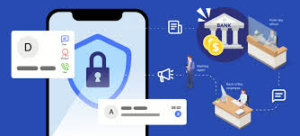34 people (27 men, 7 women) were arrested for allegedly providing their bank accounts to scammers for money laundering
Police froze over 240 bank accounts and seized around $955,000 in suspected scam proceeds
700+ phone lines linked to scams were terminated
In 2024, there were 1,504 reported cases of government official impersonation scams.
The scammers typically operate by:
Impersonating bank staff, NTUC Union representatives, Income Insurance staff, or government officials
Claiming there are issues with transactions or insurance policies
Eventually redirecting victims to someone pretending to be from the police, Anti-Scam Center, or MAS
Convincing victims to transfer money to “assist in investigations”
It’s crucial to remember that legitimate government officials will never ask you to transfer money or request banking/Singpass information over the phone. Similarly, organizations like NTUC Union won’t request personal information or payments to personal accounts through unsolicited communications.
Unfortunately, these sophisticated multi-stage scams are becoming more common globally, not just in Singapore.RetryCanalyse all scams and apply anti-scam centre measures in Singapore.
Analysis of Scams and Anti-Scam Centre Measures in Singapore
Common Scam Types in Singapore
Government Official Impersonation Scams
Impersonating police, MAS, or other officials
Claims of money laundering investigations
Requests for fund transfers to “safe accounts”
$151.3 million lost in 2024 (1,504 cases)
Banking-Related Scams
Fake bank staff claiming suspicious transactions
Phishing links to steal banking credentials
Often escalate to government impersonation
Job Scams
Promises of high pay for minimal work
Recruitment via messaging platforms
Initial small payments to build trust before more prominent scams
Investment Scams
Fake investment platforms with manipulated returns
“Pump and dump” schemes for cryptocurrencies
Impersonation of legitimate financial institutions
E-Commerce Scams
Fake listings on legitimate platforms
Non-delivery after payment
Counterfeit goods
Social Media Impersonation
Clone accounts of friends/family
Requests for urgent financial help
Relationship/romance scams
Singapore’s Anti-Scam Centre (ASC) Measures
Rapid Response Framework
24/7 hotline (1800-722-6688)
Partnerships with banks for rapid fund freezing
Ability to freeze accounts within hours of reports
ScamShield Application
Filters scam calls and messages
Blocks known scam numbers
Reports new scam numbers to central database
Project FRONTIER
Cross-border collaboration with international police
Targets international scam syndicates
Joint operations to disrupt scam infrastructure
Bank Account Tracing
Sophisticated monitoring of money flow
Quick identification of money mule accounts
Freezing and recovery of scammed funds
Public Education Initiatives
Targeted awareness campaigns
Scam alert messaging systems
Community engagement programs
Industry Partnerships
Collaboration with telecommunications companies
Working with financial institutions
Joint prevention protocols with e-commerce platforms
Legal and Enforcement Actions
Prosecution of scammers and money mules
Disruption of communication channels
Seizure of criminal proceeds
Effectiveness and Challenges
The ASC has recovered significant funds since its establishment in 2019, but challenges remain:
Increasingly sophisticated scam techniques
The cross-border nature of many scam operations
Legal jurisdictional limitations
Technology evolution outpacing prevention measures
Human psychology that makes people vulnerable
For Singapore residents, staying vigilant and following the ASC’s guidance remain the best defense against scams. Report suspicious activities immediately to the Anti-Scam Helpline or the police.RetryCanalyse all scams in detail.
Analysis of Scam Types in Singapore
Government Official Impersonation Scams
These involve elaborate schemes in which scammers pose as officials from the police, MAS, or other agencies. They claim the victim is implicated in criminal activities and ultimately request transfers to “safe government accounts.”
Banking-Related Scams
Sophisticated operations use spoofed SMS messages and phishing sites that mirror legitimate banking portals, often targeting vulnerable periods like holidays when vigilance may be lower.
Job and Investment Scams
These use social engineering to build trust gradually, starting with small tasks and payments before requesting more significant “investments” or fees. Investment scams have the highest average losses, often exceeding $250,000 per victim.
Technical and Psychological Tactics
Across all scams, sophisticated tactics include:
Call spoofing technology to display official numbers
AI-generated content becoming increasingly convincing
Psychological manipulation using urgency, authority, and fear
Multi-stage approaches that evolve across different scam types
Emerging Trends
The analysis also covers concerning developments like:
Voice cloning and deepfake technology enabling more convincing impersonations
Cross-platform integration makes scams harder to detect
Demographic-specific targeting based on vulnerability profiles
The complete analysis includes detailed methodologies, statistical impacts, psychological manipulation tactics, and prevention strategies for ten major scam categories prevalent in Singapore.
1. Government Official Impersonation Scams
Methodology
- Initial Contact: Unsolicited calls from individuals claiming to be from government agencies (Police, MAS, Ministry of Health, Immigration)
- Escalation: Victims are told they’re implicated in illegal activities (money laundering, criminal cases, immigration violations)
- Pressure Tactics: Threats of arrest, prosecution, or deportation create urgency
- Technical Deception: Call spoofing to display official numbers; use of official logos in video calls
- Fund Extraction: Requests to transfer money to “safe government accounts” for “verification”
Statistical Impact
- $151.3 million lost in 2024 (1,504 cases)
- Average loss per victim: Approximately $100,000
- Demographic most affected: Middle-aged to elderly residents with substantial savings
Red Flags
- Government agencies never request money transfers for investigations
- Officials don’t conduct investigations over phone/messaging platforms
- Government agencies don’t use personal bank accounts
2. Banking-Related Scams
Methodology
- Initial Approach: SMS/emails/calls claiming to be from banks about suspicious transactions
- Authentication Theft: Phishing links requesting login credentials, OTPs, or credit card details
- Account Takeover: Immediate draining of funds once access is obtained
- Hybrid Approach: Often evolves into government impersonation scams if the victim is hesitant
Technical Elements
- Sophisticated phishing websites that mirror legitimate banking portals
- SMS spoofing to appear in the same thread as legitimate bank messages
- Use of social engineering to bypass two-factor authentication
Statistical Impact
- The second highest scam category by financial losses
- Particular spikes during holiday seasons and year-end periods
- Growing trend of targeting SME business accounts with higher transaction limits
3. Job Scams
Methodology
- Recruitment: Offered through messaging apps, social media, or fake job portals
- Job Description: Simple tasks like liking videos, reviewing products, or data entry
- Trust Building: Small payments initially made to victims to establish legitimacy
- Investment Requirement: Eventually asked to invest or pay fees to continue earning
- Account Access: Sometimes recruited as money mules by providing account access
Operational Structure
- Typically operated by syndicates from regional countries
- Multi-level marketing-style recruitment where victims become perpetrators
- Use of cryptocurrency for payments to avoid detection
Statistical Impact
- Primarily targets younger demographics (18-35)
- Sharp increases coinciding with economic downturns
- Average initial losses are relatively small ($2,000-5,000) but can escalate
4. Investment Scams
Methodology
- Legitimate Facade: Impersonation of licensed financial institutions or creation of professional-looking platforms
- Return Manipulation: Display of falsified high returns to entice further investment
- Social Proof: Testimonials from “successful investors” and fake news endorsements
- Exit Strategy: Platform “technical issues” or complete disappearance when withdrawal is attempted
Technical Sophistication
- Advanced trading platforms with real-time but manipulated data
- Integration with legitimate financial news sources
- Use of AI-generated content for communications and “analysis”
Statistical Impact
- Highest average loss per victim (often exceeding $250,000)
- Long-term operation before detection (typically 6-18 months)
- Growth in cryptocurrency-based investment scams
5. E-Commerce Scams
Methodology
- Listing Creation: Fake listings on legitimate platforms (Carousell, Shopee, Lazada)
- Price Incentives: Items listed significantly below market value
- Communication Shift: Moving conversations off-platform to avoid detection
- Payment Redirection: Requests for direct bank transfers instead of platform payments
Item Categories Most Affected
- High-demand electronics (gaming consoles, smartphones)
- Event tickets (concerts, sports events)
- Luxury goods and limited-edition items
- COVID-related items during the pandemic (masks, test kits)
Statistical Impact
- Highest number of cases but lower average losses ($500-2,000)
- Seasonal spikes during holiday shopping periods
- High rate of repeat victimization
6. Social Media Impersonation Scams
Methodology
- Account Cloning: Creation of duplicate profiles of friends/family
- Trust Exploitation: Leveraging established relationships for credibility
- Emergency Narrative: Stories of urgent financial need or time-sensitive opportunities
- Relationship Building: Romance scams involving months of communication before financial requests
Technical Approaches
- Use of stolen photos and personal information
- Strategic targeting of contacts who aren’t in regular communication
- Creation of elaborate backstories verifiable through fake social media history
Statistical Impact
- Disproportionately affects elderly users less familiar with digital security
- Average losses between $5,000-20,000
- High emotional impact beyond financial losses
7. Tech Support Scams
Methodology
- Alert Generation: Pop-up messages claiming device infection or security breach
- Helpline Contact: Providing phone numbers for “technical support”
- Remote Access: Convincing victims to install remote access software
- Problem Fabrication: Creating fake issues to justify payment for “repairs”
Technical Elements
- Browser script exploits to create persistent pop-ups
- Fake scanning tools showing non-existent problems
- Use of technical jargon to overwhelm and confuse victims
Statistical Impact
- Lower average financial losses but a high number of attempts
- Often targets less tech-savvy individuals
- Secondary damage through malware installation and data theft
8. Loan Scams
Methodology
- Easy Approval: Promises of loans without credit checks or with minimal documentation
- Fee Collection: Demands for processing fees, insurance, or administrative costs before loan disbursement
- Information Harvesting: Collection of personal and financial information for identity theft
Operational Structure
- Fake websites mimicking legitimate financial institutions
- Heavy advertising during economic downturns
- Use of messaging apps for communication to avoid regulatory oversight
Statistical Impact
- Targets financially vulnerable individuals
- Average losses between $1,000-5,000
- Often leads to identity theft and further financial impacts
9. Prize/Lottery Scams
Methodology
- Win Notification: Messages claiming the recipient has won a contest they never entered
- Verification Process: Requests for personal information to “verify” identity
- Fee Requirement: Demands for taxes, processing fees, or transfer charges to receive winnings
Technical Approaches
- Mass messaging campaigns targeting thousands simultaneously
- Use of legitimate company names and logos
- Creation of fake award certificates and official documents
Statistical Impact
- Lower average losses but high success rate due to volume
- Primarily affects elderly and less-educated demographics
- Often international in nature, making recovery difficult
10. Cryptocurrency Scams
Methodology
- Initial Education: Offering to teach cryptocurrency trading to novices
- Guided Investment: Directing victims to specific platforms controlled by scammers
- Profit Display: Showing artificial gains to encourage more significant investments
- Withdrawal Issues: Creating excuses or additional fee requirements when victims attempt to withdraw
Technical Sophistication
- Custom trading platforms with manipulated values
- Integration with legitimate blockchain explorers showing confirmed transactions
- Complex smart contracts designed to lock funds permanently
Statistical Impact
- Rapidly growing category with very high individual losses
- Difficult to trace due to blockchain anonymity
- Technical complexity creates barriers to reporting and understanding
Emerging Trends and Future Concerns
AI-Enhanced Scams
- Voice cloning technology enabling impersonation of known contacts
- Deepfake video calls impersonating officials or family members
- AI-generated communication that learns and adapts to victim responses
Cross-Platform Integration
- Scams starting on one platform and migrating to others to evade detection
- Multiple simultaneous approaches to increase credibility
- Integration of various scam types (e.g., job scam evolving into investment scam)
Targeting Specific Demographics
- Elderly-specific scams exploiting health concerns or isolation
- Youth-targeted scams through gaming platforms and influencer impersonation
- Professional-targeted scams with industry-specific knowledge
Psychological Manipulation Tactics
Common Across All Scams
- Urgency Creation: Limited-time opportunities or threats requiring immediate action
- Authority Exploitation: Leveraging respect for institutions and officials
- Reciprocity: Providing small benefits to create an obligation for compliance
- Social Proof: Demonstrating others’ supposed success or participation
- Scarcity: Portraying limited availability of opportunities
- Fear Stimulation: Creating anxiety about negative consequences
- Isolation: Instructing victims not to discuss with others
Neurological Impact
- Stress response inhibiting critical thinking capabilities
- Emotional activation bypassing logical assessment
- Decision fatigue from prolonged engagement reduces resistance
Victim Recovery and Psychological Impact
Financial Recovery Rates
- Government impersonation scams: <10% recovery rate
- Banking scams: 15-30% recovery if reported within 24 hours
- E-commerce scams: <5% recovery rate
Psychological Effects
- Financial trauma syndrome affecting future decision-making
- Trust issues with institutions and technology
- Shame and self-blame leading to underreporting
- Secondary victimization through family and community judgment
Preventive Measures and Resources
Individual Protection
- Use of ScamShield application
- Regular financial account monitoring
- Verification through official channels only
- Time buffer for significant financial decisions
Institutional Support
- Anti-Scam Centre hotline: 1800-722-6688
- Bank fraud departments with 24/7 reporting capability
- Community awareness programs for vulnerable populations
- Psychological support services for scam victims
Technological Solutions
- Two-factor authentication implementation
- Transaction limits and abnormal activity alerts
- Delayed processing for unusual transactions
- Cross-bank coordination for suspicious activity
Analysis of Scams and Anti-Scam Centre Measures in Singapore
Common Scam Types in Singapore
- Government Official Impersonation Scams
- Impersonating police, MAS, or other officials
- Claims of money laundering investigations
- Requests for fund transfers to “safe accounts”
- $151.3 million lost in 2024 (1,504 cases)
- Banking-Related Scams
- Fake bank staff claiming suspicious transactions
- Phishing links to steal banking credentials
- Often escalate to government impersonation
- Job Scams
- Promises of high pay for minimal work
- Recruitment via messaging platforms
- Initial small payments to build trust before larger scams
- Investment Scams
- Fake investment platforms with manipulated returns
- “Pump and dump” schemes for cryptocurrencies
- Impersonation of legitimate financial institutions
- E-Commerce Scams
- Fake listings on legitimate platforms
- Non-delivery after payment
- Counterfeit goods
- Social Media Impersonation
- Clone accounts of friends/family
- Requests for urgent financial help
- Relationship/romance scams
Singapore’s Anti-Scam Centre (ASC) Measures
- Rapid Response Framework
- 24/7 hotline (1800-722-6688)
- Partnerships with banks for rapid fund freezing
- Ability to freeze accounts within hours of reports
- ScamShield Application
- Filters scam calls and messages
- Blocks known scam numbers
- Reports new scam numbers to central database
- Project FRONTIER
- Cross-border collaboration with international police
- Targets international scam syndicates
- Joint operations to disrupt scam infrastructure
- Bank Account Tracing
- Sophisticated monitoring of money flow
- Quick identification of money mule accounts
- Freezing and recovery of scammed funds
- Public Education Initiatives
- Targeted awareness campaigns
- Scam alert messaging systems
- Community engagement programs
- Industry Partnerships
- Collaboration with telecommunications companies
- Working with financial institutions
- Joint prevention protocols with e-commerce platforms
- Legal and Enforcement Actions
- Prosecution of scammers and money mules
- Disruption of communication channels
- Seizure of criminal proceeds
Effectiveness and Challenges
The ASC has recovered significant funds since its establishment in 2019, but challenges remain:
- Increasingly sophisticated scam techniques
- The cross-border nature of many scam operations
- Legal jurisdictional limitations
- Technology evolution outpacing prevention measures
- Human psychology that makes people vulnerable
For Singapore residents, staying vigilant and following the ASC’s guidance remain the best defense against scams. Report suspicious activities immediately to the Anti-Scam Helpline or the police.
Social Engineering: Anatomy of Manipulation and Defense
Social Engineering Techniques
Psychological Manipulation Strategies
- Authority Impersonation
- Scammers pose as official representatives (e.g., bank officers, government officials)
- Exploit victims’ respect for authority and tendency to comply with perceived authoritative figures.
- Use official-sounding language, titles, and fabricated credentials.

- Fear and Urgency Tactics
- Create artificial time pressures to prevent critical thinking
- Trigger emotional responses like panic or anxiety
- Common threats include:
- Legal consequences
- Financial penalties
- Account suspension
- Potential criminal investigations

- Trust Building and Rapport
- Develop a seemingly genuine conversational flow
- Use personal details to appear credible
- Gradually escalate requests, starting with minor, seemingly innocuous asks
- Exploit human tendency to be helpful and avoid confrontation

- Information Harvesting
- Collect fragmentary personal information from multiple sources
- Use social media, public databases, and previous data breaches
- Craft highly personalized, convincing narratives
Technical Manipulation Methods
- Phishing Techniques
- Spoofed communication channels
- Lookalike websites and email addresses
- Malicious links and attachments
- Screen sharing and remote access exploitation

- Multi-Stage Scam Progression
- Complex narratives involving multiple fake personas
- Gradual erosion of victim’s skepticism
- Continuous redirection and technical jargon
Prevention Strategies
Personal Awareness and Education

- Critical Thinking Development
- Always verify unsolicited communications independently
- Use official contact methods from verified sources
- Never click links or download attachments from unknown sources
- Recognize and resist emotional manipulation

- Communication Red Flags
- Unsolicited contact requesting personal information
- Pressure to act immediately
- Requests for financial transfers
- Communication via unofficial channels
- Threats or aggressive language

Technical Protective Measures
- Digital Security Practices
- Use multi-factor authentication
- Regularly update software and security systems
- Install reputable antivirus and anti-malware solutions
- Use dedicated communication and banking apps
- Enable transaction notifications

- Information Protection
- Minimize public personal information sharing
- Use privacy settings on social platforms
- Create complex, unique passwords
- Regularly monitor financial statements
- Use virtual credit cards for online transactions

Institutional and Technological Interventions
- Technological Defenses
- Implement AI-driven fraud detection systems
- Develop advanced caller ID and communication verification tools
- Create comprehensive scam reporting mechanisms

- Educational Initiatives
- Regular public awareness campaigns
- School and workplace training programs
- Clear, accessible resources on emerging scam techniques
- Collaborative efforts between government, tech companies, and financial institutions
Psychological Resilience

- Emotional Intelligence
- Recognize personal emotional triggers
- Practice calm, methodical responses to unexpected communications
- Develop healthy skepticism without becoming paranoid
- Community Awareness
- Share scam experiences
- Supporting vulnerable community members
- Create support networks for scam victims
Emerging Trends
- Increasing sophistication of AI in social engineering
- Cross-platform information integration
- More personalized, contextually relevant scam attempts
Conclusion
Social engineering exploits fundamental human psychological vulnerabilities. Comprehensive defense requires a multi-layered approach combining technological solutions, personal awareness, and continuous education.
Maxthon

Maxthon has set out on an ambitious journey aimed at significantly bolstering the security of web applications, fueled by a resolute commitment to safeguarding users and their confidential data. At the heart of this initiative lies a collection of sophisticated encryption protocols, which act as a robust barrier for the information exchanged between individuals and various online services. Every interaction—be it the sharing of passwords or personal information—is protected within these encrypted channels, effectively preventing unauthorised access attempts from intruders.
Maxthon private browser for online privacyThis meticulous emphasis on encryption marks merely the initial phase of Maxthon’s extensive security framework. Acknowledging that cyber threats are constantly evolving, Maxthon adopts a forward-thinking approach to user protection. The browser is engineered to adapt to emerging challenges, incorporating regular updates that promptly address any vulnerabilities that may surface. Users are strongly encouraged to activate automatic updates as part of their cybersecurity regimen, ensuring they can seamlessly take advantage of the latest fixes without any hassle.
In today’s rapidly changing digital environment, Maxthon’s unwavering commitment to ongoing security enhancement signifies not only its responsibility toward users but also its firm dedication to nurturing trust in online engagements. With each new update rolled out, users can navigate the web with peace of mind, assured that their information is continuously safeguarded against ever-emerging threats lurking in cyberspace.
